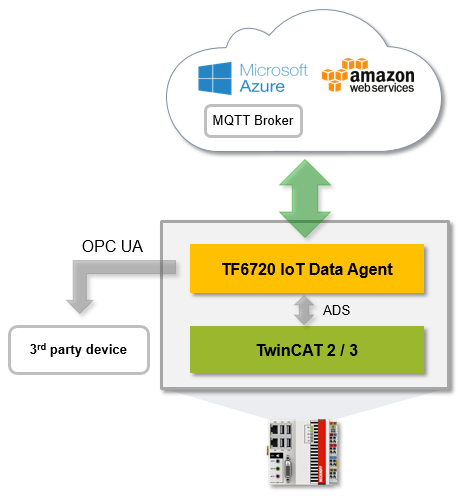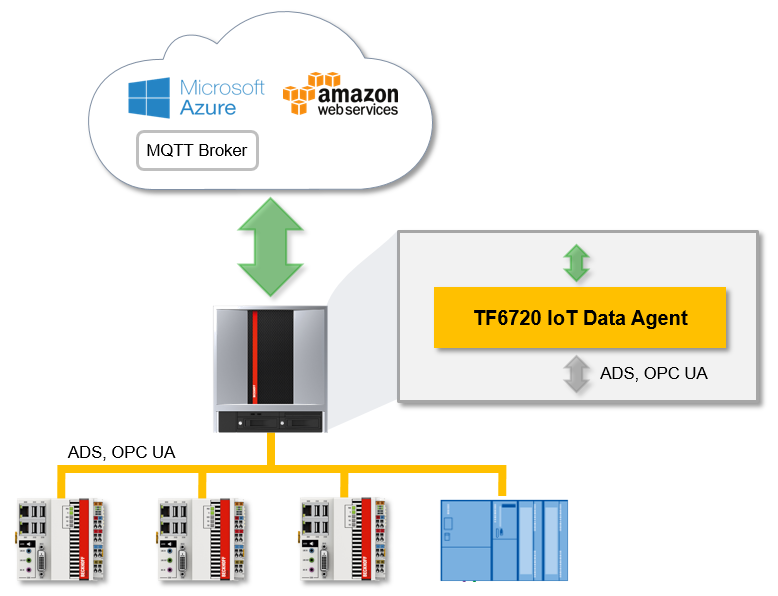Setup scenarios
TC3 IoT Data Agent can be used in almost every deployment scenario. It can either be installed and used directly on the industrial controller (see System Requirements) or on a gateway computer that aggregates multiple devices or connects to legacy applications like TwinCAT 2. Each setup scenario has its advantages and disadvantages, depending on the system environment and project for which the TC3 IoT Data Agent is to be used.
TC3 IoT Data Agent running on the controller
This is the default scenario. TC3 IoT Data Agent is installed directly on a Beckhoff industrial controller (IPC or Embedded-PC) and connects only to the TwinCAT runtime on that system. This is the preferred scenario because every IoT device should have an own connection to the cloud service, although gateway scenarios are possible and sometimes also necessary.

TC3 IoT Data Agent running on a gateway computer
In this scenario, TC3 IoT Data Agent is installed on a gateway computer that aggregates multiple devices, e.g. to connect to existing machine applications in a retrofit scenario. This scenario can also be combined with other TwinCAT Functions, e.g. a TwinCAT OPC UA Server, which is also able to aggregate multiple TwinCAT runtimes. A typical hardware device for such a setup scenario is a Beckhoff C6015 Ultra-Compact Industrial-PC.
Be aware that the network traffic between the TC3 IoT Data Agent and the underlying devices can be very high in this setup scenario because the TC3 IoT Data Agent needs to sample symbols from every connected runtime and this sampling is being done via the network.

TC3 IoT Data Agent configurator
The TC3 IoT Data Agent configurator is a graphical configuration tool. It can be installed on the same computer that executes the TC3 IoT Data Agent core application or on an engineering computer to remotely create/edit and deploy the configuration across the network.